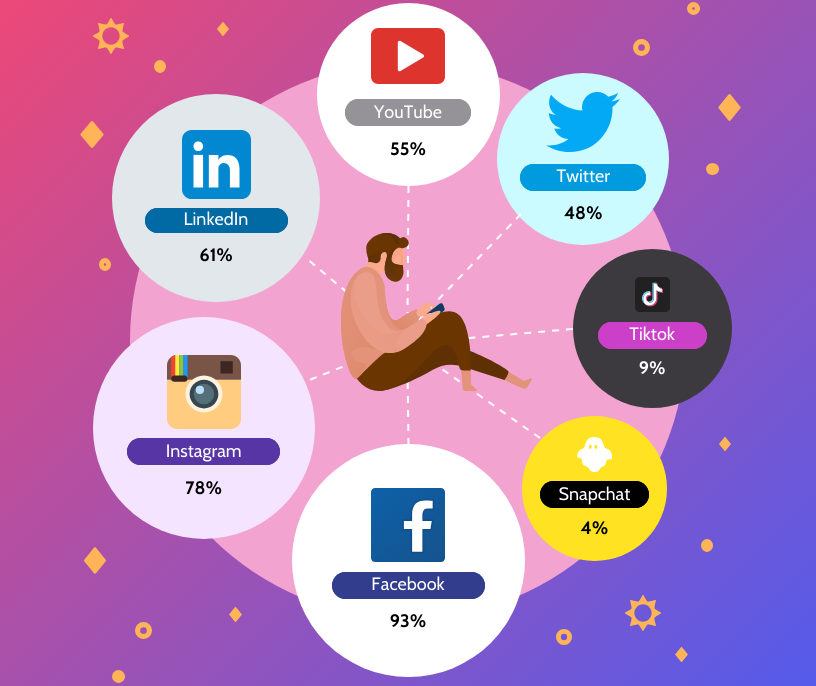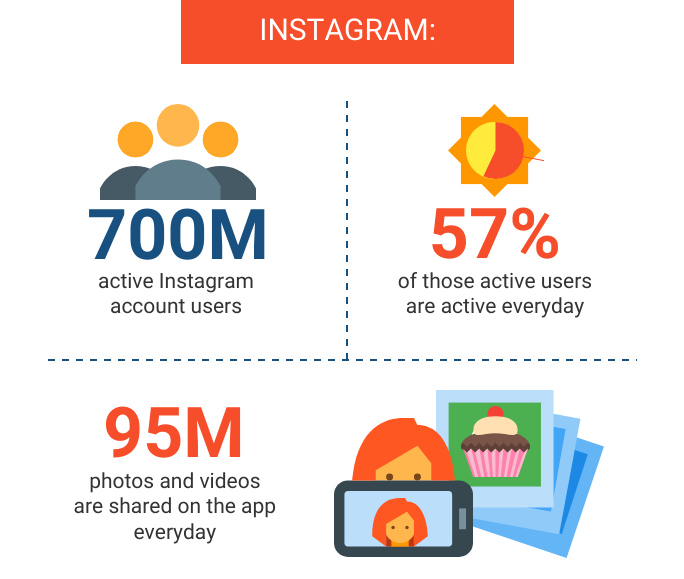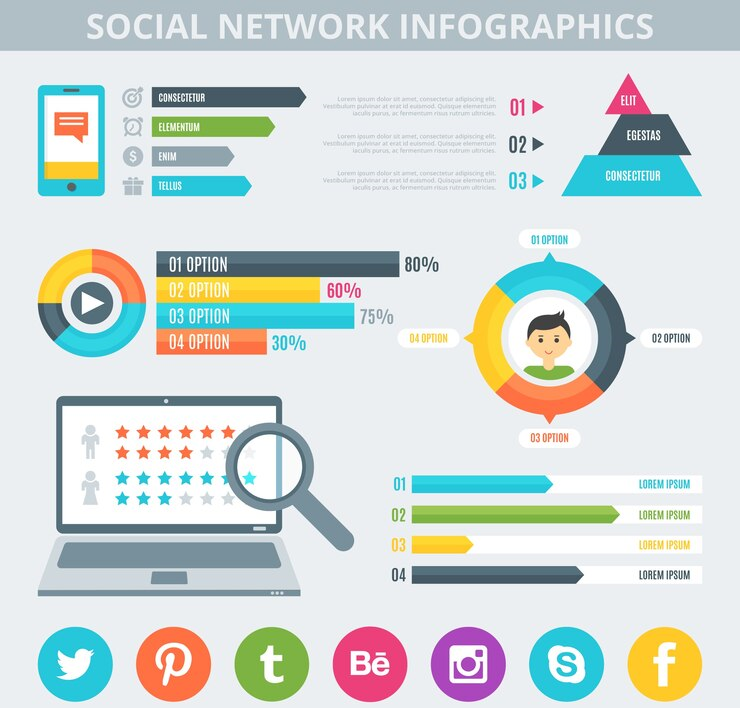Table of Contents
ToggleThe Strategic Uses of Infographics in Social Media Marketing
Introduction
In the frenetic social media marketing landscape, grabbing users’ attention is an ongoing struggle. With Instagram, TikTok, LinkedIn, and Pinterest favoring visually oriented content, marketers are finding themselves gravitating toward infographics as a means to distill complex information, enhance engagement, and facilitate conversions. Infographics—visual displays of data, statistics, or processes—blend concise text, engaging graphics, and intuitive design to convey messages succinctly and rememberably.
As of 2024, social media users spend an average of 2.5 hours daily on platforms, but their attention spans are shrinking. Studies show that posts with visuals receive 3x more engagement than text-only content. This essay explores the multifaceted uses of infographics in social media marketing, supported by updated insights from leading platforms and real-world case studies.
Enhancing Engagement Through Visual Appeal
Social media platforms reward content that gets users on-platform for longer. Infographics dominate here by providing scroll-stopping visuals customized for platform-specific trends:
- Facebook & Instagram: Carousel posts containing infographics get 1.4x more reach than static images. For instance, @HubSpot leverages carousels to deconstruct marketing trends, achieving 20% more swipe-through rates.
- TikTok: The lets users upload 10-minute videos, but bite-sized infographic slideshows (3–7 seconds per slide) do amazingly well. Brands such as @Canva use animated infographics to teach design advice, gaining 500k+ likes per post.
- LinkedIn: Long infographics in PDFs or document posts get 30% more comments compared to text posts, since professionals are looking for actionable information.
By conforming to platform standards, infographics maintain audiences’ attention longer, indicating algorithmic favorability.

Simplifying Complex Information
Infographics distill intricate data into digestible formats, making them ideal for industries like finance, healthcare, and tech:
- B2B Marketing: LinkedIn users engage 2x more with infographics explaining SaaS metrics or AI trends. For instance, Salesforce’s “State of Marketing” report uses infographics to highlight CRM adoption rates, driving 15k+ shares.
- Public Health: CDC Instagram infographics about vaccine effectiveness reached 2 million users in 2024 using color-coded timelines and iconography.
- Finance: Fintech companies such as Robinhood employ TikTok infographics to de-mystify stock market trading, appealing to Gen Z users.
Such platforms as Pinterest, where 85% of visitors come for “inspiration,” favor infographics that condense DIY guides or recipe steps.
Enhancing Brand Recognition and Remembrance
Repeat visual branding within infographics reaffirms identity:
- Color Psychology: Coca-Cola’s red-and-white infographics on sustainability initiatives reach 90% brand recall on Twitter.
- Templates: Brands such as Adobe Spark provide editable infographic templates to maintain consistent visuals for campaigns.
- Memes & Trends: Netflix combines infographics with meme culture on Twitter, condensing show facts (e.g., design rankings for Stranger Things viewers) into comedic formats.
A 2024 Sprout Social report revealed that 65% of users retain visual content longer than textual information, highlighting infographics as essential for brand recall.
Driving Website Traffic and SEO Benefits
Infographics shared on social media can improve SEO through backlinks and keyword integration:
- Pinterest: Infographics optimized with keywords (e.g., “2024 Digital Marketing Trends”) receive higher visual search rankings, sending 40% of referral traffic to blogs.
- Alt Text Optimization: Including descriptive alt text for infographics on Instagram or LinkedIn increases accessibility and searchability.
• Blog Embeds: Shared infographic backlinks increase domain authority. Neil Patel’s SEO guides, for instance, utilize embeddable infographics, which create 50k+ monthly backlinks.

Lead Generation and Conversion Support
Infographics are valuable lead magnets:
- Gated Content: HubSpot provides downloadable infographics (e.g., “Email Marketing Benchmarks”) in exchange for email addresses, with a 25% conversion rate.
- Product Demos: Shopify’s Instagram infographics showing e-commerce setup steps drive users to free trials, boosting sign-ups by 18%.
• CTA Integration: Swipe-up links in animated infographics on TikTok Shop shorten the buying process.
Cross-Platform Adaptability
One infographic can be reused across various platforms:
- Instagram Carousels → Twitter Threads: Repurpose carousel slides as threaded tweets with hashtags.
- LinkedIn Documents → Pinterest Pins: Turn PDF infographics into Pinterest-friendly pins with vertical layouts.
- TikTok Videos → YouTube Shorts: Voiceover infographic slideshows for YouTube’s Shorts feed.
This flexibility optimizes ROI and guarantees consistent messaging.
Best Practices and Challenges
Though mighty, infographics need strategic implementation:
- Accessibility: Employ readable fonts, contrast levels, and alt text for screen readers.
- Mobile Optimization: 80% of social media usage is on mobile; favor vertical formats and concise text.
•Data Accuracy: Misleading figures can destroy credibility, always use valuable reference sources such as Statista or Pew Research.
Future Trends: AI and Interactive Infographics
New technologies such as AI design tools (e.g., Canva Magic Design) automate the production of infographics, interactive infographics with clickable buttons become popular on LinkedIn and X (formerly Twitter), and Augmented Reality (AR) infographics, like IKEA’s product guides on Instagram, provide immersive experiences.
Conclusion
Infographics continue to be a staple in social media marketing, filling the gap between information overload and audience engagement. With the use of platform-specific tactics, accessibility first, and AI-powered design, brands can use infographics to inform, delight, and convert audiences. As social media continues to evolve, so will the innovative uses of infographics—cementing their position as a foundation of digital storytelling.
